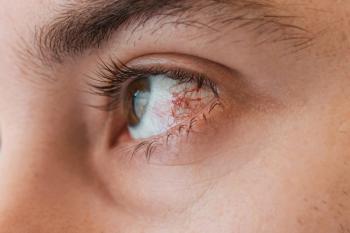
What you need to know about the Essilor-Luxottica deal
Paris-In a $49 billion deal, Italian frames manufacturer Luxottica and French lens manufacturer Essilor formed a holding company, EssilorLuxottica, that will be co-run by both groups.
“Each company will remain separate and operate as independent companies,” says Optometry Times Advisory Board and Essilor Advisory Board member John Rumpakis, OD, MBA. “But when the deal closes later this year and over the next three years, they will be taking a look at synergies where they can integrate and work together.”
Powerhouses combine
In addition to being leaders in the lens and frame markets, respectively, each company also owns a variety of other big eyecare players.
Some Essilor brands and subsidiaries include:
• Vision Source
• Transitions
• Costa
• Kodak Lens
•
Some Luxottica brands and subsidiaries include:
• EyeMed
• LensCrafters
• Pearle Vision
• Sunglass Hut
• Target Optical
• Sears Optical
• Glasses.com
Related:
Look to opportunity
Howard Purcell, OD, FAAO, senior vice president of customer development at Essilor of America, told Optometry Times he understands that a deal of this magnitude has raised many questions and concerns within the eyecare community-but he hopes ODs will think of the opportunities it presents.
He says EssilorLuxottica gives vision-the industry and the subject matter-a louder voice in the role it plays globally, not only in people’s ability to see but in their ability to contribute to their families by being able to work.
“When I first heard this, it was ‘wow’ for me, too,” he says. “I’ve had more time to think about it than others have. Now, I’m imagining the possibilities.”
Examples of possibility include:
• Improving supply-chain management
• Bringing innovation to frames and lenses to improve patient experience
• Escalating engagement with premium products, programs such as Think About Your Eyes, and consumer awareness for eye exams
“This deal does not change Essilor’s support of the independent eyecare professional,” Dr. Purcell says.
Related:
What the deal means for you now
Speculation abounds regarding what the deal will mean for eyecare providers. EssilorLuxottica will have a large market share in most aspects of eye care, from retail optical to managed vision care to frames to lenses to labs and more.
But industry experts we spoke with say that it will be a long time before changes will have real impact.
“These things take time-it’s like two huge ships. They can’t turn overnight,” says Dr. Rumpakis.
Optometry Times Editorial Advisory Board member Bryan Rogoff, OD, MBA, predicted big consolidation moves in 2017 in our
Related:
While it evokes a lot of emotions in the eyecare community, he says the deal probably won’t mean change in day-to-day business for ODs. Due to the sheer size and breadth of the companies involved, the deal is expected to take months to finalize and full integration will likely take years.
Dr. Rogoff says each company likely has a lot of waste that it will be able to eliminate when they finally integrate-meaning big savings for the parent company.
“If you look at the pattern in the way Essilor purchased Vision Source, PERC, and other types of businesses,” he says, “they operate independently for a long time until Essilor or the parent company starts to figure out how they could lower their expenses by combining certain infrastructure and getting the vertical integration paired correctly.”
Vision Source and EyeMed
As with
Dr. Purcell says Essilor has not required Vision Source ODs to use Essilor products, and he does not anticipate any change in policies due to the deal at this time.
Related:
“We have kept choice, including our competitors,” he says. “We have demonstrated we can do this, even going back 10 years to when Essilor bought its first labs. Look at the history. We have done what we said.”
Vision Source administrator and Optometry Times Editorial Advisory Board member Scott Schachter, OD, sees the deal as a boost to Vision Source.
“We are now part of a bigger team with more power and resources and an eye on the future in a rapidly evolving marketplace,” he says. “In the eyecare world of 2017, I believe it is more important than ever to be part of a team invested in your success.”
As for EyeMed? Dr. Purcell says he recognizes that the area of managed care is an emotional one for eyecare providers-but it’s just too early in the deal to give any specifics.
Related:
While he says he can’t promise the company will be able to address everything ODs don’t like about EyeMed, Dr. Purcell says that Essilor now has a say and will use the opportunity to voice its customers’ opinions.
“We have a voice now we didn’t have before,” he says. “The holding company has created a board and it is equal in terms of its voting rights. So we have an equal voice in trying to influence things that people liked as well as didn’t like.”
Deal regulation
Given the large role Essilor and Luxottica play in their respective industry sectors, ODs have questioned if the new company may violate antitrust or monopoly laws.
Although both companies are based in Europe, U.S. officials will have a say. According to Dr. Purcell, all countries in which Essilor and Luxottica do business, including the United States, will evaluate this deal.
“When you really look, there’s very little overlap between the two companies of what businesses we play in,” he says. “You could argue that there’s a small overlap in frames. If you look at the rest of our businesses, there’s almost no overlap, so it doesn’t necessarily increase market share in particular categories. Our counsel believes we’re in a good position, but it will be determined over time.”
Related:
Looking ahead
Dr. Rumpakis says he believes the deal will ultimately be a good thing for independent practitioners and will help to give them a voice.
Dr. Purcell agrees.
Historically, Luxottica has had no reason to care about the independent OD-and in some ways, it has competed against them. But now, the company has chosen to invest in the independent and give that demographic a voice, he says.
Essilor consults with an OD advisory panel to gain insight into the community. Now, EssilorLuxottica will form a new, larger advisory committee featuring not just ODs but also opticians and ophthalmologists.
Related:
Ultimately, Dr. Purcell asks that the eyecare community give the company a chance to prove itself before it jumps to any conclusions. Although he is nervous, he says his optimism about the deal outweighs the nerves.
“Let’s give this a chance before we decide it’s awful or it’s great. We’re in a position we’ve not been in in the past to influence industry,” says Dr. Purcell. “I hope my optometry colleagues will feel the same and that they’ll share with us their thoughts, concepts, and concerns so we can be aware as possible of their sentiments.”
Newsletter
Want more insights like this? Subscribe to Optometry Times and get clinical pearls and practice tips delivered straight to your inbox.



















































.png)


